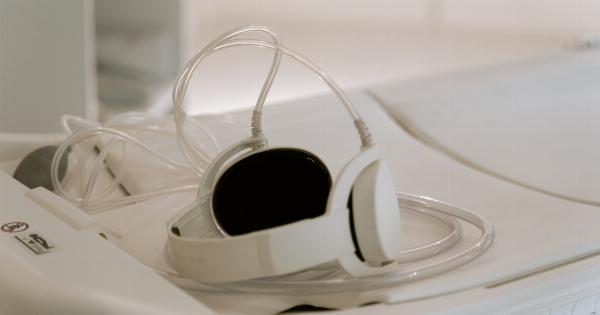Hypertension, or high blood pressure, is a common condition that affects many people around the world.
It is particularly crucial to understand the impact of pollution on pregnant women, as they are more vulnerable to the adverse effects of environmental factors. Studies have shown a clear association between pollution and hypertension in pregnant women, with detrimental consequences for both the mother and the developing fetus.
Risks and Complications of Hypertension in Pregnancy
Hypertension in pregnancy can lead to various complications, some of which are life-threatening for both the mother and the unborn child. Some of the risks associated with gestational hypertension include:.
- Pre-eclampsia: This condition can lead to organ damage and even death if not managed properly.
- Placental abruption: High blood pressure increases the risk of the placenta separating from the uterus, causing severe bleeding and endangering the health of the fetus.
- Growth restrictions: Hypertension can disrupt the baby’s growth in the womb, resulting in low birth weight or other developmental issues.
- Preterm birth: Pregnant women with hypertension are more likely to deliver prematurely, which can lead to various complications for the baby.
The Role of Pollution in Hypertension
Pollution, particularly air pollution, has been identified as a significant risk factor for hypertension in pregnant women. The following factors contribute to this association:.
1. Airborne Particulate Matter
Airborne particulate matter, also known as PM2.5 or PM10, refers to tiny particles suspended in the air.
These particles are often released into the atmosphere from various sources, including vehicle emissions, industrial processes, and burning of fossil fuels. When pregnant women inhale these particles, they can enter the bloodstream and cause inflammation, oxidative stress, and endothelial dysfunction, leading to hypertension.
2. Nitrogen Dioxide (NO2)
Nitrogen dioxide is a common air pollutant resulting from the burning of fossil fuels, particularly in vehicles and power plants. Exposure to NO2 has been linked to an increased risk of hypertension in pregnant women.
The mechanisms underlying this association include vasoconstriction, inflammation, and oxidative stress, which can contribute to the development of high blood pressure.
3. Traffic-related Air Pollution
Pregnant women residing near busy roads or in areas with heavy traffic face a higher risk of developing hypertension.
The exhaust fumes from vehicles release various harmful pollutants, such as carbon monoxide, lead, and benzene, which can have detrimental effects on cardiovascular health.
4. Indoor Air Pollution
Indoor air pollution, often caused by the combustion of solid fuels for cooking and heating purposes, is a significant concern in many developing countries.
Exposure to indoor pollutants such as particulate matter and carbon monoxide has been associated with an increased risk of hypertension in pregnant women.
Protective Measures
While the impact of pollution on hypertension in pregnant women is concerning, there are steps that can be taken to mitigate these risks. Some of the protective measures include:.
- Avoiding exposure to outdoor pollution during peak traffic hours.
- Using effective air filtration systems in homes.
- Encouraging the use of clean energy sources for cooking and heating.
- Supporting policies that promote reduced emissions from vehicles and industries.
- Educating pregnant women about the risks of pollution and hypertension and providing guidance on preventive measures.
The Way Forward
Addressing the impact of pollution on hypertension in pregnant women requires a multi-faceted approach involving individuals, communities, healthcare professionals, and policymakers.
It is essential to raise awareness about the risks associated with pollution and implement effective strategies to reduce exposure. By taking proactive measures, we can create a healthier environment for pregnant women and ensure the well-being of both mothers and their infants.



























